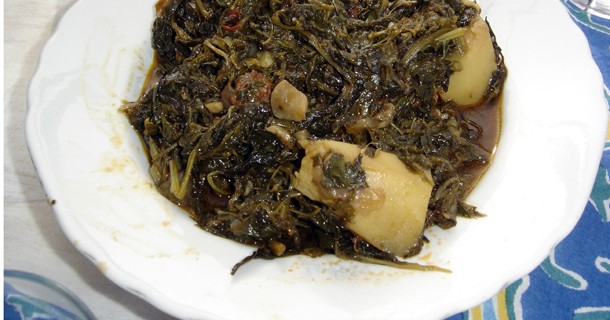
photo by Bill Bradley
On the Island of Crete, in the Mediterranean Sea, there are many foods that are considered “magical” for health. Considering the people of Crete are among the healthiest people in the world and their diet one of the most studied in the world, it seems there may really be some truth to the magic (backed by science).
I spent two months in Crete in the winter of 2005 studying the people’s diet, cooking methods, and traditional Mediterranean Diet recipes. I interviewed and watched people all over the island as they prepared their foods at home, in restaurants, and at celebrations. One common element I found everywhere I went was the cooking of mountain greens. In Crete, these many different types of edible greens are called “Horta”. Some of them are well known to us such as spinach, Swiss chard, and kale while others are known but not eaten by most Americans such as dandelion greens, chicory, and purslane.
Dan Buettner, in his book “The Blue Zones” went to areas all around the world where people were known for their amazing health and longevity. He called these areas “Blue Zones”. On the island of Ikaria, which is near Crete geographically and where we see similar food patterns, he writes “They eat a lot of wild greens. We found 70 or so types of greens, many with 10 times the level of antioxidants in green tea or red wine.” He also noticed greens being eaten in other Blue Zone areas including Okinawa. Buettner writes: “Many were prodigious gardeners, going into the fields every morning and returning with tasty greens and tubers in the afternoon.”
The health benefits of greens are beginning to become more evident as scientists do more studies. Greens are high in antioxidants and many are very high in Omega-3 fatty acids. One study found that “eating one and a half extra servings of green leafy vegetables a day reduced the risk of type 2 diabetes by 14%”[1] Other research shows a possible connection between eating greens and increased immune function as well as extended lifespan.
Personally, I try to get at least 1 serving of dark green leafy vegetables every day. Often this is by eating a salad, but in the summer I eat a lot of Swiss chard. Even in the winter, you can get plenty of yummy greens such as spinach and kale.
One note of caution with greens is that because of their strong effect on our bodies there are certain medicines that interact with them poorly. If you are taking Coumadin, for example, you will want to speak with your doctor about the amount of greens, if any, you can eat.
[1] Science Daily – Green Leafy Vegetables Reduce Diabets Risk, Study Finds, Aug 19, 2010.
